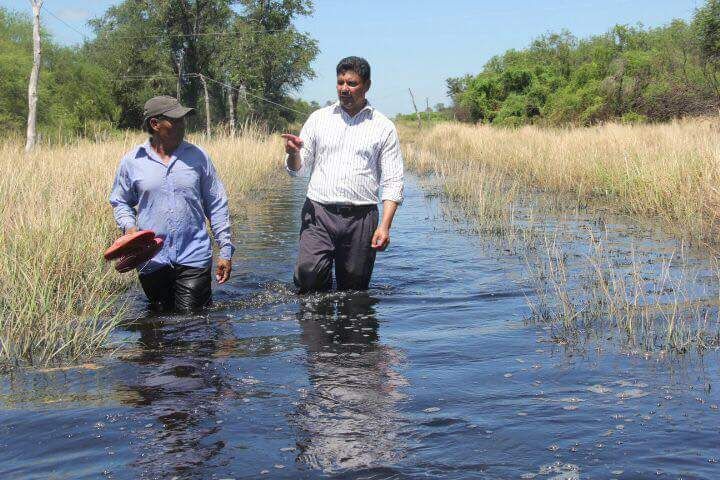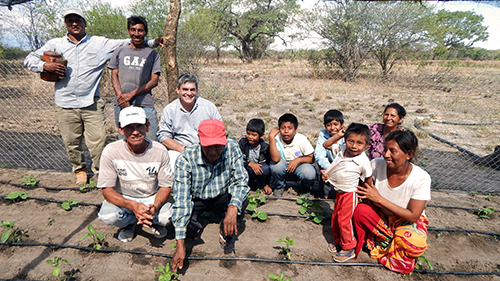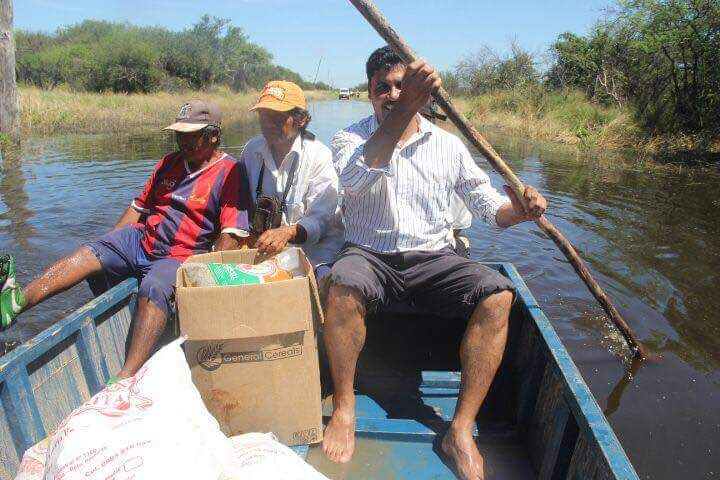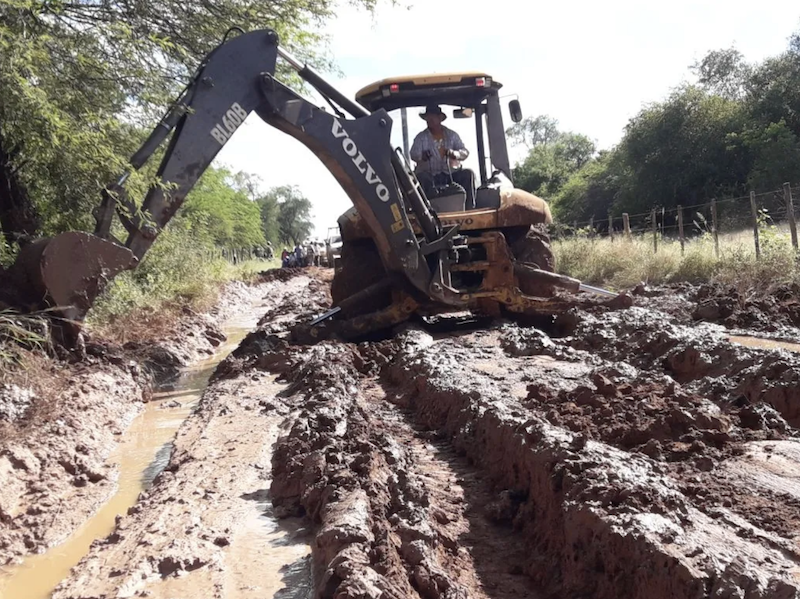Last year, with the aim of improving institutional response to climate vulnerability, Solidaridad coordinated a landscape governance body in the area of Teniente Irala Fernández.
At present, this multi-stakeholder platform is carrying out relief action against the sudden floods, coordinating the efforts of political, academic and financial parties.
Seven Months of Drought, Then Flooding
The climate in the semi-arid central Chaco has been marked by periods of rainfall and drought during the year. However, this year has been unusual. After seven months of persistent drought, which endangered food security among indigenous communities and left small dairy farmers almost pastureless, the amount of rain fallen in such a brief time exceeded soil capacity to retain water.
The onslaught of water cut roads along its path and flooded crops, pasture fields and some villages in areas with low elevations. As a result, the indigenous communities of El Estribo and Diez Leguas have become isolated and dairy farmers surrounding Teniente Irala Fernández lost 700 liters of milk that could not reach commercialization routes due to roadblocks.
A Governance Body to Improve Response Capacity
A similar emergency occurred in 2012, affecting the same area. However, the institutions responsible for providing relief acted on their own, making dispersed actions with little effect.
Last year, to coordinate efforts that increase available resources and speed up the response to the effects of climate change, Solidaridad created a governance scheme with the Dutch Government support. This consists of convening civil society organizations, local and departmental authorities, indigenous communities, producer associations, and government offices that provide technical and credit assistance so they can work together and generate synergies.
The Governance Body analyzes problems that affect food production and its effects on natural resources. It also defines and coordinates actions to help groups affected by extreme climate events such as prolonged droughts and floods.

Pictured: Chaco Tte Irala Mayor Visiting Flooded Indigenous Communities
Effective Actions Against The Emergency
To cope with the current flood, members of the Governance Group met to plan short-term mitigation actions. As a first step, the authorities of the Presidente Hayes and the Municipality of Tte. Irala joined forces to clean drainage channels at critical points and opened neighborhood roads to avoid isolation.
Additionally, the Governance Body members convened a special meeting with the Paraguayan Emergency Operations Center, the Ministry of Agriculture and Livestock, the Agricultural Credit Institution and the University of Agrarian Sciences in Chaco. After getting to know the emergency situation in detail, the institutions distributed tasks among themselves:
-
The Municipality of Tte. Irala Fernández will purchase a large-scale motor grader for the repair and conditioning of roads. The municipality will provide sewer pipes to the most affected and urged areas. Residents of the Santa Cecilia area, Cooperativa el Quebracho, already received the pipes.
-
The Emergency Operations Center will continue assessing communities and roads to identify needs, in partnership with the Pan American Health Organization. In partnership with the National Emergency Secretariat, it will continue supplying food to indigenous communities. Finally, in coordination with doctors from the Ministry of Health, it will provide medicine and other supplies to indigenous communities where eye and skin diseases are already occurring.
-
Agricultural Sciences University – Chaco students will support the work of the Emergency Operations Center by georeferencing the points where pipes are necessary.
-
The Ministry of Agriculture and Livestock will provide 20,000 seedlings of onion and garden seeds to take advantage of surplus water and produce food with irrigation systems.
-
The Agricultural Credit Institution displayed their availability to sign a agreement with the municipality to provide producers with quick access to loans to face their losses.

Pictured: Chaco orchard with dripping irrigation system
Pilots to Improve Long-Term Climate Resilience
In addition to improving the capacity of the governance body to work together in emergencies, Solidaridad seeks to identify and finance solutions to improve resilience to droughts among indigenous communities and dairy producers.
These pilot solutions can be grouped between those that focus on adaptation to climate change and those that focus mitigating. Results, once systematized, will serve as inputs to design public policies and investment proposals.

Pictured: Chaco Tte Irala Mayor Visiting Flooded Indigenous Communities
Climate change adaptation pilots are targeted at indigenous communities, which are the most vulnerable groups to droughts. They specifically aim at:
-
Increasing rainwater catchments among 434 families in the communities of El Estribo and Diez Leguas for human and animal consumption.
-
Improving food security by setting school orchards in eight communities. These plots will provide food for around 800 families and sesame, a cash crop whose sales will provided the needed money to invest in the following year harvest.
-
Pilots of mitigation to climate change, on the other hand, are targeting dairy producers associations and seek to demonstrate that intensifying production and increase productivity in the same amount of land. The actions that are being implemented are:
- Recovering degraded pastures and setting 40 demonstration plots with silvopastoral grazing schemes to better preserve pasture land.
- Improving the genetics of dairy herds, animal welfare, the availability of hay, silage and water to feed the animals during the dry season in winter.
- Performing an adequate management of remaining forests for their rational use.

Pictured: Attempts to clear roads in Chaco.
